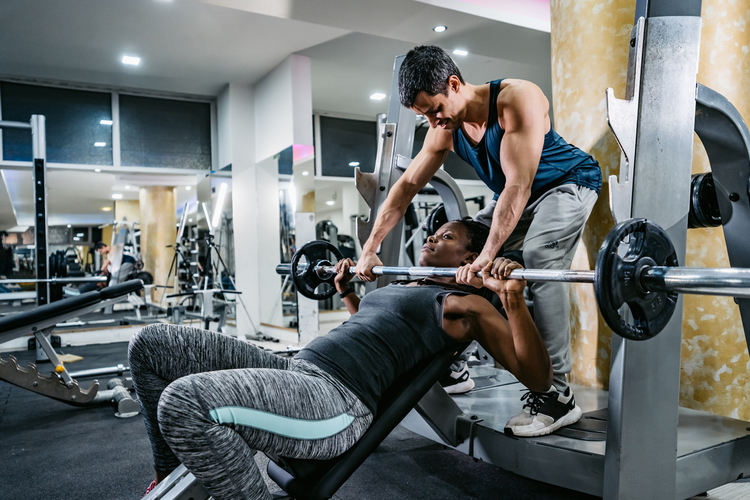Don’t be a dumbbell – avoid kettlebells if you want to add muscle mass!
No doubt about it – kettlebells are a hot new training tool even though they shouldn’t be. I see droves of people using them in the gym and run into articles about them all over the Internet. They’ve been around a long time and were recently re-popularized by Pavel Tsatsouline, a physical training specialist from the former Soviet Union. (While I think his views on kettlebells are a little off, he has a very interesting approach to physical training and puts forth a lot of very worthwhile and counter-intuitive ideas. You can check out some of his work here: www.powerbypavel.com)
The problem with the big increase in kettlebell use is that the majority of people who are training with them are looking to increase muscle mass. With the exception of most women and a few men who are trying to get stronger without adding any additional muscle in order to stay in a certain weight class, there aren’t too many men on this planet who wouldn’t like to add at least a few pounds of muscle in the right places.
And if packing on pound after pound of power-generating, t-shirt stretching muscle is your goal, the last thing you should be doing is using kettlebells.
Let’s look at what is required in order for you to add some muscle to your frame:
Your body aims for homeostasis – the ability of a living organism to maintain a stable equilibrium. This works in our favor most of the time, (keeps you from freezing to death in the ocean or melting in a hot shower). It also allows our blood sugar to stay in a VERY tight range as well. (Learn more about that in my article You’re only 1/4 of teaspoon of sugar away from being diabetic)
This tendency of the body to stay where it currently is, however, means that in order for it to change the internal hormonal environment enough to create the proper conditions to add muscle, a pretty big stimulus is going to be required. And that stimulus is going to have to be very sustained to ensure that the adaptations build on one another in order to accrue appreciable muscle that will have groupies hanging from your newly anointed pythons.
It’s like creating a pearl. It takes an irritant (a grain of sand in the case of a pearl) rubbing and rubbing for long enough for the clam to finally secrete enough stuff to surround the sand and create a pearl. If the stimulus is too small (the sand isn’t big enough) or not constant enough (you open the clam up and remove the sand grain too early) there will never be a pearl. You let it cook long enough, however, and you’ve got a string o’ pearls that even Jackie O. would be proud to wear.
So what provides the stimulus (irritant) for our bodies to add muscle? Most people would say “lifting weights” but what wouldn’t be correct at all.
The real answer is “lowering weights”.
Remember that resistance training has two components – the lifting (or concentric) portion, and the lowering (or eccentric) portion. Most people focus their effort on the lifting part and don’t give much thought to the lowering part even though it’s the lowering that creates the stimulus for muscle to grow in size.
It’s been tested pretty well. Researchers have had subjects lift a weight with one arm and lower it with the other for several weeks. One arm was doing entirely concentric work, while the other was doing purely eccentric work. After measuring both arms at the end of the training period, the arms that had lifted weights had zero to very little growth while the other arms had grown significantly.
This type of study has been replicated many times with the same results regardless of the body parts used. It’s pretty clear that the stimulus for growth in weight training comes from resisting a weight that’s being lowered. That’s what really tears the muscle fibers as you have friction working for you and it’s why you’re up to 40% stronger lowering weights than you are in lifting them. (Here’s a pretty good overview study that analyzes the results from many individual studies)
It’s why rowing athletes, despite spending a lot of time working with resistance in a concentric manner, don’t add any appreciable muscle mass. As they aren’t doing any eccentric movements, even though they increase their efficiency at the exercise of rowing, they don’t add muscle mass. (Eccentric movements have also been shown to be superior for increasing muscle strength as well but that’s a topic for another article.)
Some of the most productive training programs involve focusing on the negative portion of the lift and this approach allows you to increase your results enormously while actually cutting down your training time.
Now let’s bring it all back around to kettlebells. Because they focus on the lifting of a weight and very minimally with the lowering of it, they are a complete waste of time for those trying to add muscle mass. There may be other reasons to train with them but I see people all the time in gyms using them that say they are trying to add some more muscle. Personal trainers are continually having their clients who do want to increase muscle size use them set after set, without realizing that they are wasting their client’s time.
So if you’re in the market for some new muscle – stay away from kettlebells and instead focus on exercises that really allow you to effectively resist the weight as you lower it.


